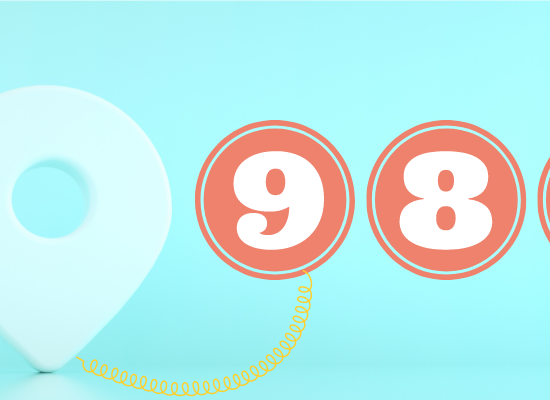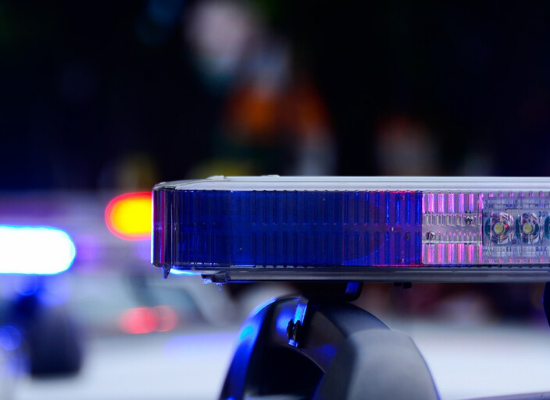
Stephanie Hepburn is a writer in New Orleans. She is the editor in chief of #CrisisTalk. You can reach her at .
Child and adolescent mental health providers and families are hopeful that 988 will help shift the crisis response for young people away from 911. However, Dr. Jeff Bostic says existing mental health systems have been primarily built for people ages 18 to 65. The same is true for mental health advocacy. “Next in line is 65-plus,” he says, “and last on the list are kids.” Dr. Bostic is a child and adolescent psychiatrist and the medical director for the MedStar Georgetown Center for Wellbeing in School Environments (WISE).
He says the reason is twofold: kids don’t frequently testify before Congress, though it does occasionally happen. For example, on June 8, 11-year-old Miah Cerrillo, who survived the Robb Elementary School mass shooting in Uvalde, Texas, testified on gun violence before the House Oversight Committee in a pre-recorded video. The second reason, notes Dr. Bostic, is that people view children as resilient. “The notion is that they’re like flowers—they’re growing and going to be okay.” This thinking is widespread among schools and pediatricians.
Dr. Bostic points out that the assumption is generally correct, but that doesn’t mean children don’t need support, intervention, and services. “Most kids are pretty resilient,” he says. “It’s the timeframe when the brain is most plastic.” For example, he notes that learning a language at 50 is far more challenging than at 5. However, this plasticity and openness make the pediatric years a critical time for support and intervention. “It’s so backward that our emphasis isn’t on the early years when we know addressing adversities during childhood and adolescence reduces mental health diagnoses, impacts, and impairments by between 30% and 40%, at least in the United States.”
As states plan for 988 and scaffold implementation, he asks that they carefully consider young people. “By providing children and adolescents the support they need, we help them flourish rather than flounder.”
Young people in the U.S. are experiencing a mental health crisis. One that Dr. Vivek Murthy, the U.S. surgeon general, said in an advisory pre-existed but was exacerbated by the Covid pandemic. In 2016, suicide became the second leading cause of death for ages 10-34, and between 2009 and 2019, persistent feelings of sadness or hopelessness rose by 40% among U.S. high school students. During the pandemic, this number has increased by 7.5%, with 44.2% experiencing persistent feelings of sadness or hopelessness, with at-risk students experiencing even higher percentages.
The overall percentage of high school students who reported seriously considering suicide increased by slightly more than a percent, from 18.8% in 2019 to 19.9% in 2021. Among the 7,705 participants of the 2021 Adolescent Behaviors and Experiences Survey—designed to assess U.S. high school students’ mental health and suicidality during the pandemic—9.0% had attempted suicide during the 12 months before the survey compared to 8.9% the previous year. The highest attempted suicide percentages were among LGBQ, American Indian/Alaska Native, female, multiracial, and Black students.
In May, the Trevor Project released its 2022 national survey on LGBTQ youth mental health. It included nearly 34,000 participants ages 13-24 and revealed that almost 20% of those who were transgender and nonbinary attempted suicide in the past year.
As with adults, law enforcement has historically been the default response for young people experiencing a mental health crisis. However, those calling 911 or the police department for assistance are often parents and schools. “A parent might have a conflict with their child and call 911, hoping an officer will talk some sense into their kid,” says Dr. Bostic. However, he points out that police officers don’t go into the force to become mental health clinicians, and department training rarely covers pediatric mental health. “Interactions where police navigate family conflicts don’t usually go too well.”
State and local leaders are increasingly investing in youth mobile response, including mobile crisis teams, to help divert young people experiencing mental health challenges from a law enforcement response and the school-to-prison pipeline. In May, Whitney Bunts shared with #CrisisTalk that mobile response services can bridge education and behavioral health systems, providing schools with a non-law enforcement alternative when students are in distress. “Systems in the U.S. are so siloed, and there’s insufficient partnership and interaction between them,” she said. For example, in Connecticut, schools that partnered with the state’s mobile crisis intervention services experienced a 40-100 percent drop in arrests, depending on the school. Bunts is a youth policy analyst at CLASP, a nonprofit that advances policy solutions to improve the lives of people with low incomes.
While Dr. Bostic is hopeful that 988 implementation will divert mental health and substance use calls from 911 and increase a youth mobile crisis response, he says it’s still essential that law enforcement know how to de-escalate children and adolescents in distress. He’s a consultant for Strategies for Youth, a program that attorney Lisa Thureau founded in 2010 to improve police encounters with young people and reduce unnecessary arrests and use of force. In the early 2000s, Thureau and Dr. Bostic provided training to the Massachusetts Bay Transportation Authority Transit Police, improving police-youth interactions and lowering arrests by 84%.
The techniques, says Dr. Bostic, shifted how officers approached young people. For example, instead of gruffly yelling, “Hey, you’re not supposed to be here right now,” they started asking kids about the temperature in the room. “With the first approach, a 14-year-old is more willing to go down in a blaze of glory than look like a wuss in front of their friends,” he says. “That results in arrest, and nothing good comes from that.” Asking a question like, “Is it hot in here to you?” taps into the cognitive part of a young person’s brain. “They stop, turn their heads, then usually say, “I don’t think so?” Compared to adults, young people selectively process information more with their amygdala—the part of the brain that processes emotions like fear, anxiety, anger, and sadness—than the prefrontal cortex.
“The kids are so perplexed when the officers throw out a cognitive question like that, but it moves them away from a fight, flight, or freeze response—the one they often have when they see an officer approaching and think it’s going to be DEFCON 1.” He says, it’s then that a rational conversation can happen.
In an interview with The Atlantic, Thureau shared that in 1999, the MBTA Transit Police arrested roughly 649 kids, many of whom were from marginalized communities. By 2009, the number decreased to 84. The objective of Strategies for Youth isn’t just to deter arrests, points out Dr. Bostic, but to connect young people to services in the community. Thureau told the publication that the training dives into what’s happening in the teen brain, not only normative development but also mental health challenges that might compromise a young person’s development like “depression, OCD, autism, ADHD, and dysregulation.”
With 988, Dr. Bostic says partnership between 911 and 988 will be critical and must include an easy-to-follow call triage determining when law enforcement should or shouldn’t be involved. Places like Virginia, Austin, Harris County, Los Angeles County, and Tucson have developed call assessment matrixes to standardize and divert the vast majority of mental health and substance use calls from 911. “We need to ensure crisis response systems interact effectively,” says Dr. Bostic. “So that child and adolescent mental health challenges go to 988 and police aren’t still positioned to go into schools and households and pour gasoline on the fire by not having the right tools to navigate these issues.”
In Virginia, level 1 (routine) and 2 (moderate) 911 calls go directly to a regional 988 call center, while level 3 and 4 calls require a more nuanced approach. For example, Alexandria Robinson-Jones told us that a level 3 (urgent) call response should consider specialized populations. “That might mean looking to REACH teams for people with developmental disabilities,” she said, “or our children’s mobile crisis teams.” Robinson-Jones is the Behavioral Health (MARCUS Alert) Program and Training coordinator at Virginia’s Department of Behavioral Health and Developmental Services.
Dr. Bostic points out that diversion helps young people access community-based services instead of ending up in the juvenile or adult criminal legal system. In the paper, Improving the Child and Adolescent Crisis System: Shifting from a 9-1-1 to a 9-8-8 Paradigm, Dr. Sharon Hoover and Dr. Bostic wrote that nearly 70% of kids in the juvenile criminal legal system have a behavioral health disorder. Yet, Dr. Bostic notes many police academies have spent 1% or less of their training hours on juvenile justice issues even though a large chunk of arrests directly result from police-young person interactions, offenses like “disrespecting” an officer or “contempt of cop.”
Training is vital for shifting law enforcement’s lens to a trauma-informed, neurodevelopmental approach. Dr. Bostic says when officers have an increased understanding of what’s happening in the adolescent brain, they start realizing the way a teen behaves toward them usually isn’t personal. “The kid’s not trying to be disrespectful.” That’s when officers nod their heads, many of whom have, or have had, teenagers at home. “It resonates with them, and it’s then that their thoughts and behaviors toward kids they encounter begin to change.”










